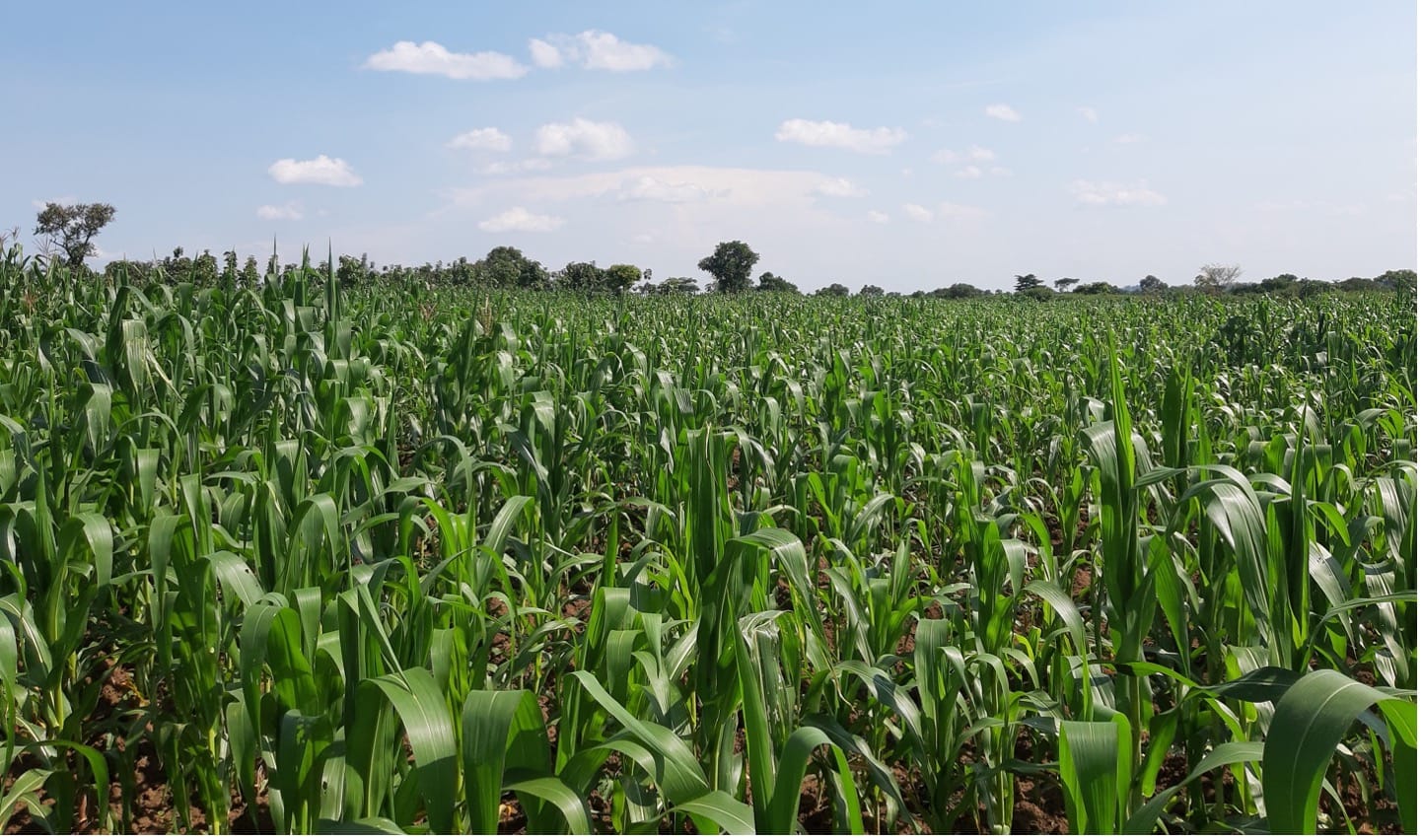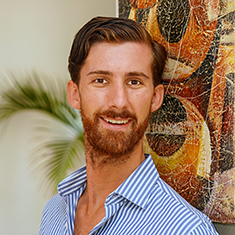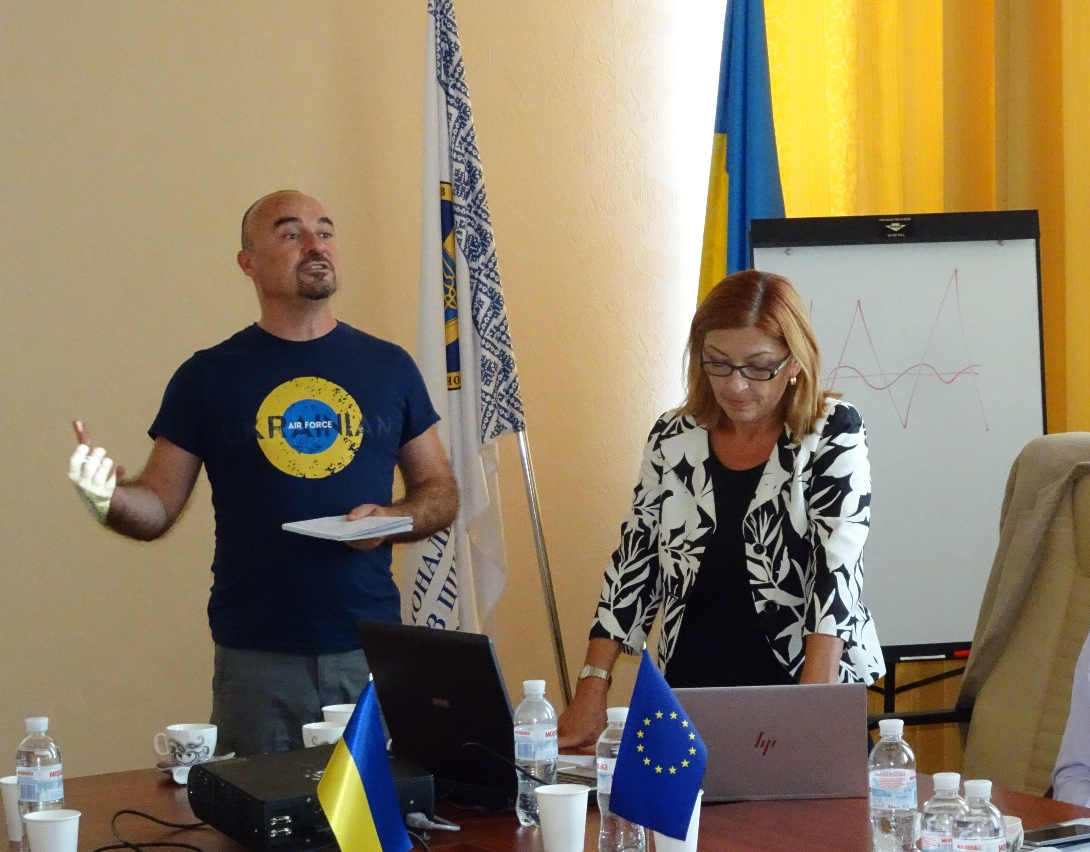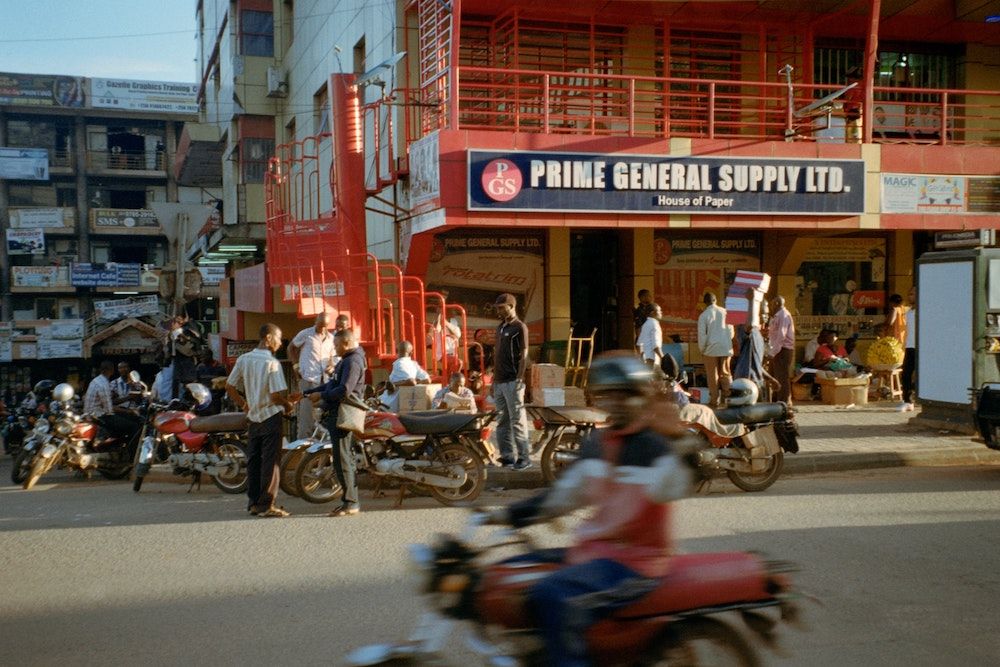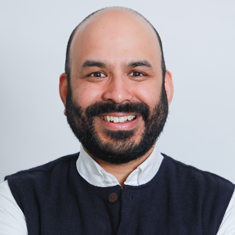Investment opportunities in manufacturing, agriculture, and health are as abundant globally as the capital to fund them, but investors in these and other sectors are rightly cautious about entering new countries and taking risks on small and growing businesses and productive infrastructure. Fortunately, there are many examples in these teeming markets of how capital supported by local development expertise and entrepreneurial energy has generated both financial returns and development results.
The U.S. Agency for International Development (USAID) and other donors are pursuing “blended finance” as an approach to attract productive capital into developing countries. Blending private capital with donor-funded local expertise and risk-mitigation instruments can leverage donor resources, yield competitive returns for investors, and increase stability and prosperity for citizens.
In fact, it already has. DAI is helping to mobilize capital that generates profit and alleviates poverty by convening the right partners, developing solid business plans, structuring investment deals, addressing policy constraints, and realistically projecting and delivering positive outcomes.

Facilitating Trade and Investment
Across East Africa, USAID and DAI have engaged transaction advisors CrossBoundary and used pay-for-results contracts to close investment deals. This program under the East Africa Trade and Investment Hub (EATIH) has closed $51.1 million of investment transactions in two years for eight firms in the mobile technology, financial services, logistics, dairy, and poultry sectors. An additional $75 million in transactions is pending closure, with $133 million more in the pipeline.
Importantly, this pay-for-results approach has shortened the deal-closure timeline from 18 to 24 months to six to 10 months, thereby reducing transaction costs and leading to follow-on deals from other investors. DAI’s local team helps to nurture the pipeline from beginning to end: mapping capital, targeting geographies and sectors, validating opportunities, conducting due diligence, modeling financials, raising funds, structuring transactions, ensuring neutral intermediation, and planning the post-investment phase.
EATIH issued a second bid for investment transaction services focused on underserved, smaller, export-oriented businesses—specifically, those requiring some assistance to help them become investment ready and seeking up to $1 million in financing. Open Capital Advisors, which has offices in Kenya, Uganda, and Zambia, was contracted and has begun work on a pay-for-results basis. DAI is adapting this results-based model on USAID’s Southern Africa Trade and Investment Hub (SATIH) and elsewhere.

East Africa offers an abundance of small and growing businesses and uninvested capital. To support investment, EATIH developed a deal pipeline for its roster of regional private equity and impact investors. The team also supported companies to become investor ready, while adhering to USAID requirements that investees have regional presence, create jobs, and encourage gender parity.
For example, one multimillion-dollar investment by a private U.S. firm enabled MB PLC (Family Milk) of Addis Ababa, Ethiopia, to boost production from 20,000 liters per day to 60,000. Another private equity firm invested in a regional logistics company, enabling it to convert 100 trucks to cold storage, which is critical for growing agricultural value chains. These trucks are now transporting horticultural produce across borders.
Launched in 2016, the Pretoria-based SATIH is also accommodating different types of investors, including pension funds. The pension fund model requires longer-term, equitable returns, with transactions in the $25 million to $500 million range. Investments of this profile tend to be large infrastructure projects such as toll roads or fiber optics, which would help with regional trade. SATIH also works to improve the enabling environment by working to align national investment policies with the Southern Africa Development Community (SADC) and is conducting an investor survey on the investment climate.
USAID’s support for constructive deal-making is not limited to Africa. Its Jordan Competitiveness Program (JCP) selected 15 companies from three target sectors—ICT, clean technology, and health care—to participate in a Growth Readiness Program. In collaboration with the American University of Beirut and Inventis Consulting Group, JCP designed and delivered technical assistance to each firm, facilitated pitches to investors, and ultimately helped six of the firms raise $17.6 million. American University is now exploring how to institutionalize the program to assist more of Jordan’s small and growing businesses to access capital.
Mobilizing Capital in Somaliland
In Somaliland, USAID and DAI conducted the territory’s first business-plan competition. Local entrepreneurs wowed judges with their entries, the winners earning more than $1 million in matching grants to co-fund their growth in promising sectors such as agriculture, livestock, fisheries, and renewable energy. The businesses leveraged $12 million in local, diaspora, and foreign investor capital—leading, for example, to the development of the region’s first 100 kilowatt (kw) wind energy public-private partnership, which spurred investment by the private sector of an additional 2 megawatts in the wind sector.
Fueling Ethiopia’s Growth
In Ethiopia, the economy is growing yet remains overwhelmingly poor and rural, so the country is building at least 12 industrial parks to attract investment and create jobs in needful areas. Accordingly, the Enterprise Partners program is working with employers at the flagship Hawassa Industrial Park—which hosts firms making clothes for brands such as Tommy Hilfiger and Calvin Klein—by organizing training for an estimated 60,000 to 80,000 jobs in factory operations, warehousing, cleaning, maintenance, and transportation. Five factories are already exporting from the park and 30 other investors have booked production space. The park’s international tenants are covering 75 percent of recruiting and training costs. Similar foreign-funded and market-driven job development is anticipated at the other industrial parks.
Also under Enterprise Partners, the team is:
- Supporting the Government of Ethiopia to develop a foreign and domestic investment strategy to meet the demand for “fast fashion”—that is, the capacity to respond quickly to trends in the global apparel sector; and
- Developing a bank-managed loan facility where potential investors and investees of private capital in the Ethiopian equity market can use interest-free loans to hire high-quality investment advisors.

Helping Companies Overcome Capital Constraints
The world’s 400 million small and medium-sized businesses in emerging markets represent hardworking business owners and real growth potential, but development actors and private investors have only scratched the surface of the opportunities at hand. These businesses’ demand for capital is sometimes being met domestically.
Under the USAID/Kenya Financial Inclusion for Rural Microenterprises (FIRM) project, DAI unlocked $1 billion-plus in financing, mostly for rural businesspeople. The FIRM team worked with more than 100 financial institutions to develop loan products, and demand for capital in marginalized areas did the rest, spurring investment in sectors such as agriculture, water, energy generation, and ICT.
In all, $186.3 million was leveraged under FIRM for private sector investments in agricultural and food value chains. A pipeline of clean energy projects was developed, with a $7 million deal for a hydroelectric power plant on the Yala River closed in December 2016. Another $120 million in Development Credit Authority guarantees supported $43 million in reduced-risk loans with 16 partner financial institutions. Most importantly, FIRM built a foundation of financial professionals and institutions that will serve the country’s markets for years to come.
In Poland, where the economy is growing but not energy efficient or environmentally sensitive, DAI and the European Bank for Reconstruction and Development helped create the country’s energy finance sector. Over seven years, the Polish Sustainable Energy Finance Facility (PolSEFF) assisted five domestic banks to appraise and close more than 2,000 investment opportunities for business owners who had no way to capitalize new or upgraded equipment for heating, cooling, electric power, and insulation.
The businesses’ investments, averaging €100,000, are paying for themselves through lowered energy costs. In training 840 bank and leasing staff on responsibly financing energy projects—and developing an online catalogue of more than 700 registered companies and 7,000 eligible products—PolSEFF is well positioned to help capitalize Polish energy needs.
Energy finance is a ripe market—DAI also manages the SEFF facility in Morocco and is a consortium member in the Western Balkans SEFF, which together with PolSEFF aim to manage €430 million for energy efficiency investments by small and growing businesses.
**Impact Bonds in Palestine** In Palestine, World Bank [Finance for Jobs](https://www.dai.com/our-work/projects/palestine-finance-for-jobs-f4j) (F4J) aims to mobilize private investment and create jobs in the West Bank and Gaza by crowding in private investment, including by: 1) an Entrepreneurship Ecosystem Matching Grant Facility that targets early-stage investment funds for viable projects; and 2) a Development Impact Bond to be issued by the Palestinian Authority. F4J will build capacity in the Palestinian Authority through technical assistance, training, secondments, and internships, and by providing facilities, equipment, and software.
Facilitating Capital Flow for Water Infrastructure
People will pay for clean water linked to good accessibility and service quality. In the Philippines, public investment for water supply and sanitation projects historically covered only about 20 percent of the need. USAID and DAI closed the financial gap by institutionalizing private financing for water supply and sanitation projects.
By leveraging development assistance from Japan, blended capital co-financing between the Philippine government and private banks, and risk-absorbing guarantees, the water industry mobilized more than PhP10.5 billion (US$234 million) in mostly private capital for water and sanitation infrastructure. More than 40 projects were funded, affording 1.3 million Filipinos access to safe water or improved services, with another 5 million projected to be served. Effectively, the Philippines Water Revolving Fund created by USAID and DAI shifted the Philippines’ water-financing paradigm from purely public to public-private. Today, private banks continue to originate loans with water districts and local government units driven by demand from water consumers.
Similarly, to overcome the risk-return hurdle for water investments in Cambodia, water companies jumped at the chance to acquire results-based financing to close the financial gap that had prevented the expansion of residential water hookups. By taking advantage of this capital, they extended services to 67,000 new customers in just 18 months while making operational upgrades that benefitted an additional 130,000 rural poor.
Capital—The Next Level of Development Partnering
The international development community has been ramping up its partnerships since at least 2001, when USAID launched its Global Development Alliances initiative. Starting in 2010, under USAID’s Grand Challenges for Development program, DAI administered global competitions—in water access, agricultural mechanization, health services, and literacy—that attracted thousands of entries, led to 104 awards between $100,000 and $2 million, and leveraged $124 million in external funding.
DAI itself has made the commitment to invest in companies that have good prospects of delivering reasonable returns while generating development results. For example, in 2002, USAID contracted DAI to assume management of Khan Bank (then known as the Agricultural Bank of Mongolia, an institution indispensable to rural Mongolians) and prepare it for sale. The DAI-led team transformed the failing bank, implementing new policies and procedures, developing and retraining staff, rebranding and marketing the organization, developing new products, and inculcating new values and behaviors.
Since 2003, the now-private Khan Bank has been one of the two largest banks in the country, and today it boasts the highest profitability and return on assets. Khan Bank has evolved into a full service universal bank with total assets of $2.7 billion and a network of 536 branches with over 5,000 employees. Equity has increased from $6.5 million to $333 million and loans outstanding rose from $67 million in 2004 to $1.6 billion in 2015. After the USAID engagement and privatization, Khan Bank’s new owners hired DAI directly and DAI took a small ownership stake via stock options based on performance targets.
More recently, DAI has invested in small and growing businesses offering technological solutions to development problems:
- In February 2017, DAI announced a financial commitment to ThinkMD, an early-stage global healthcare innovation company whose first product, MEDSINC, is a mobile clinical assessment platform that enables anyone, anywhere to assess the sickness of a child and provide triage and treatment recommendations.
- In March, DAI invested in the mHealth service provider MobileODT, which combines advanced optical technology with smartphone capabilities to bring affordable cancer detection services to underserved communities.
- In April, DAI acquired U.K.-based Local Content Solutions to complement DAI’s work in the oil, gas, mining, and infrastructure sectors in corporate social investment, government and community engagement, and local content and related supply chain management.
DAI recently joined the Global Accelerator Network, Investors’ Circle and the Aspen Network of Development Entrepreneurs, global leaders in supporting small and growing businesses dedicated to improving their communities and the world. DAI has formed consortia with these and other organizations to pursue opportunities in blended finance. Together, we are confident that companies and investors will increasingly seek to invest capital in emerging markets that will generate positive financial and social returns.

Leveraging Development Assistance to Invest Profitably
Clearly, USAID, other donors, and their implementing partners have a deep and growing well of in-country experience in the investment arena—experience on which investors can draw to reduce their risk in markets that have tremendous upside. At the same time, USAID’s assistance to investors is increasingly producing development results such as economic growth, expanded access to energy and water, and increased stability.
As USAID and other donors and investors explore these opportunities in blended finance, they can do so knowing that there is an abundance of local expertise and entrepreneurial energy primed to assist, in all corners of the world.
